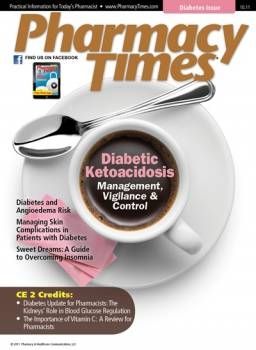Publication
Article
Pharmacy Times
Case Studies
Case One
Hypoglycemia and Beta-Blockers
OP is a 61-year-old man who visits your clinic for a regularly scheduled follow-up visit. He has hypertension and type 2 diabetes mellitus, and is currently taking metformin 1000 mg twice daily, glipizide 10 mg once daily, and metoprolol XL 100 mg once daily. OP states that he is adherent to his medications, but does not check his blood glucose regularly. He has recently noticed that he sometimes breaks out in sweats between meals. He is wondering whether this is something to be concerned about, because he has no other symptoms.
How do you, as the pharmacist, respond?
Case Two
“No-Flush” Niacin
AC is a 53-year-old woman who comes to the pharmacy counter looking for an OTC niacin product. She tells the pharmacist that she is currently taking atorvastatin 40 mg once daily, and that her doctor instructed her to buy niacin and take 1 tablet once daily to further lower her “bad cholesterol.” She has heard that flushing is a common side effect of the medication, and says that she would prefer the “no-flush” niacin. Her next appointment with the doctor is in 4 weeks.
How should the pharmacist counsel AC?
ANSWERS
Case 1: Sulfonylureas alone or in combination with metformin can precipitate hypoglycemia, the typical - signs of which are tachycardia, tremors, and sweating. However, beta-blockers can block the sym pathetic response to hypoglycemia and mask all the signs except for sweating. Thus, the patient should be educated to check his blood glucose at regular intervals, especially if he experiences abrupt sweating. When his blood glucose is too low (<70 mg/dL), OP should consume 15 g of simple carbohydrates such as fruit juice (4 oz), hard candies (5-6 candies), or glucose tablets (3-4 - tablets), recheck blood glucose after 15 minutes, and repeat as needed until no longer hypoglyce mic (ie, blood glucose >70 mg/dL). He should follow this with regularly planned meals and snacks.
Case 2: Niacin is available in several formulations, both prescription and OTC. Of the products sold OTC, niacin immediate release (IR) has the highest incidence of prostaglandin-mediated flushing. Most - other forms of niacin advertised as “no-flush” are either niacin sustained release (SR) or niacina mide, neither of which is FDA approved for the treatment of dyslipidemia. Niacinamide has little to no effect on cholesterol. Although niacin SR has efficacy in lowering low-density lipoprotein cholesterol, it also poses an increased risk of hepatotoxicity and is not recommended for use in dyslipidemia. Niacin extended release (Niaspan), available only with a prescription, has similar rates of flushing as niacin SR but a lower hepatotoxicity risk. Thus, if flushing is a major concern to the patient, she should discuss using Niaspan with her doctor. Otherwise, the starting dose for niacin IR is 250 mg with the evening meal. Niacin IR can be titrated weekly to 2 g/day in 2 to 3 divided doses, after which doses may be increased every 2 to 4 weeks to a maximum of 4.5 g/day. However, patients should only make changes to their niacin dose under the direction of their doctor. To minimize flushing, the patient can take niacin with food and avoid alcohol, spicy foods, and hot baths shortly after the dose. If appropriate, aspirin 325 mg or other nonsteroidals can also be taken 30 minutes prior to the niacin dose.
function showAnswer() {document.getElementById("answer").style.display = 'block';document.getElementById("link").style.display = 'none';}
Dr. Coleman is associate professor of pharmacy practice and director of the pharmacoeconomics and outcomes studies group at the University of Connecticut School of Pharmacy. Ms. Kim is a PharmD candidate from the University of Connecticut School of Pharmacy.







